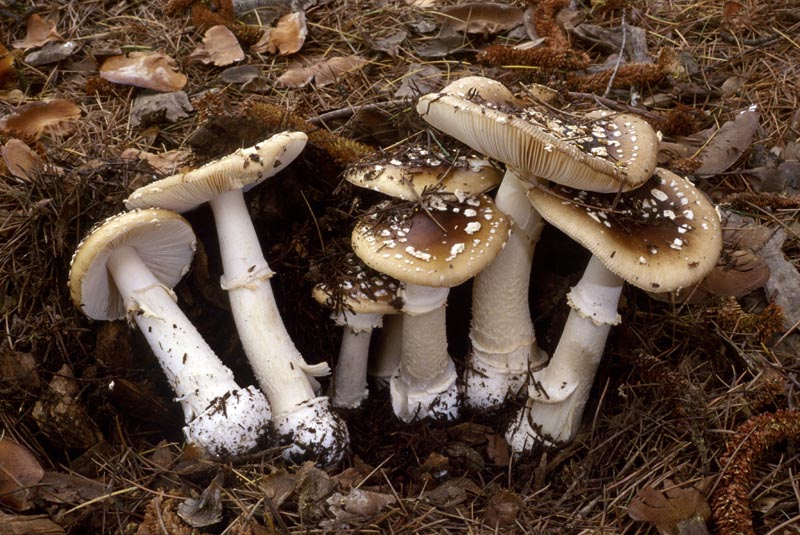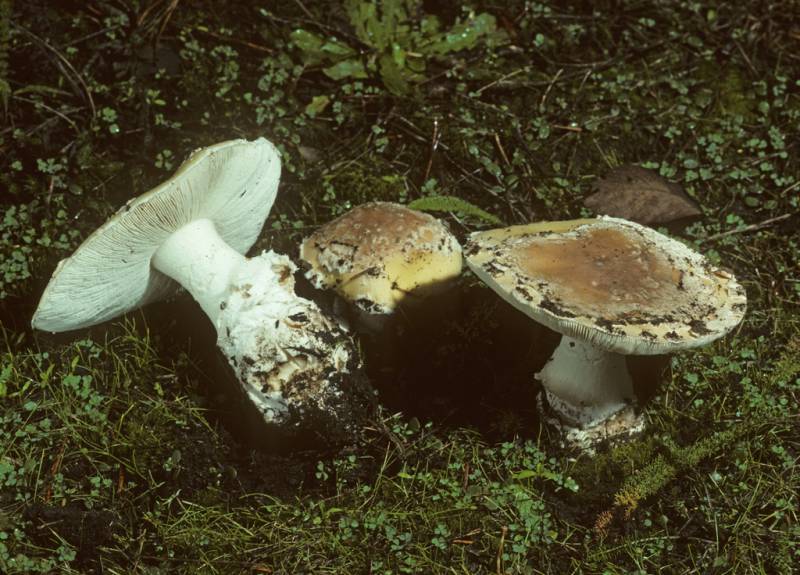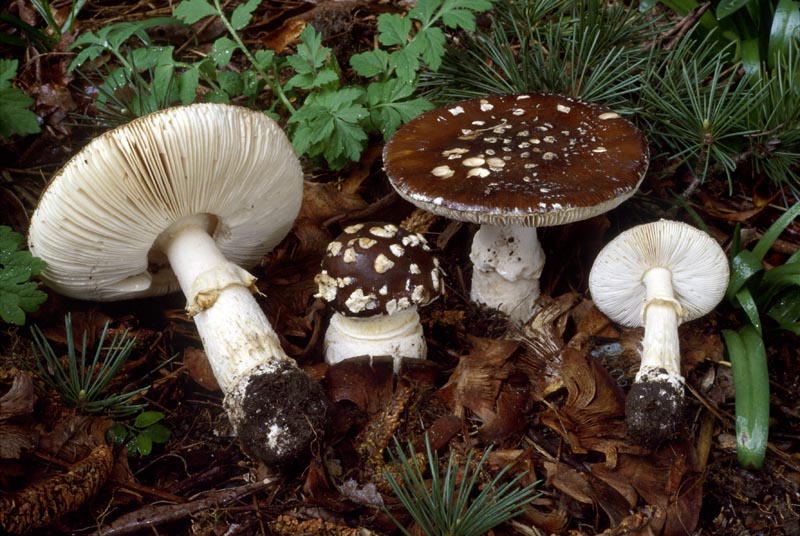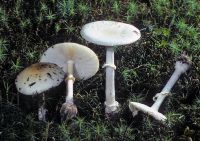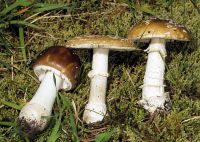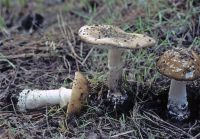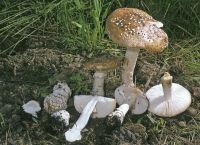Distribution: Broad
Habitat: woodlands, rarely in pastures
Substrate: broadleaf trees
Spores: late winter to early spring
Conservation Status: Not of concern
Edibility: Poisonous. A. pantherina causes a number of accidental human and dog poisonings, especially puppies, and also is consumed intentionally for its psychoactive effects. Typically the ibotenic acid concentrations are higher in this species than in A. muscaria, and are highest in the dark brown forms.
Poisonous. A. pantherina causes a number of accidental human and dog poisonings, especially puppies, and also is consumed intentionally for its psychoactive effects. Typically the ibotenic acid concentrations are higher in this species than in A. muscaria, and are highest in the dark brown forms.
Spores are white. Growth of up to 6 inches. Cap diameter of up to 4 inches.
Sources: Trudell, Steve and Joe Ammirati. Mushrooms of the Pacific Northwest. Portland, Timber Press, Inc. 2009. Roberts, Peter and Evans, Shelley. The Book of Fungi. Chicago, The University of Chicago Press, 2011.
PNW Herbaria: Specimen records of Amanita pantherina in the Consortium of Pacific Northwest Herbaria database.
CalPhotos: Amanita pantherina photos.

